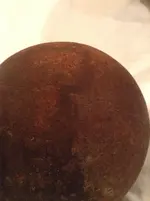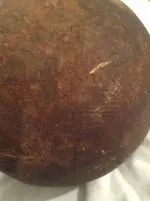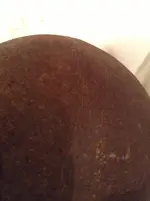Chelen
Tenderfoot
- Joined
- Mar 31, 2013
- Messages
- 7
- Reaction score
- 0
- Golden Thread
- 0
- Primary Interest:
- All Treasure Hunting
My father recently passed away and left me with a whole collection of Civil War artifacts he'd recovered in North Carolina.
One item that I'm concerned about is what appears to be a cannon ball.
It is approximately 8 and 1/2 inches in diameter and weighs twelve pounds. It's covered in a thin layer of what looks like rust, and has a bunch of short grooves encircling it.
There are on obvious holes or areas where a mechanism may have gone, but there is an odd rust ring where it touched its display shelf for the past 5 years.
I would like to know if it is A) A Civil War cannonball, canister shot, or other artifact, and B) If it's dangerous (It's not dense enough to be solid iron).
I can post pictures if it would help identification.
Thanks in advance!
One item that I'm concerned about is what appears to be a cannon ball.
It is approximately 8 and 1/2 inches in diameter and weighs twelve pounds. It's covered in a thin layer of what looks like rust, and has a bunch of short grooves encircling it.
There are on obvious holes or areas where a mechanism may have gone, but there is an odd rust ring where it touched its display shelf for the past 5 years.
I would like to know if it is A) A Civil War cannonball, canister shot, or other artifact, and B) If it's dangerous (It's not dense enough to be solid iron).
I can post pictures if it would help identification.
Thanks in advance!



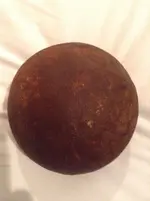
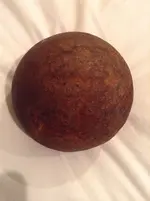
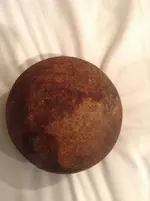
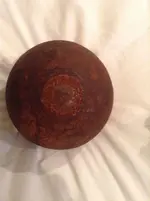
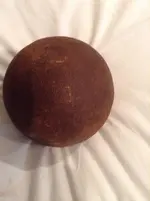
 Breezie
Breezie